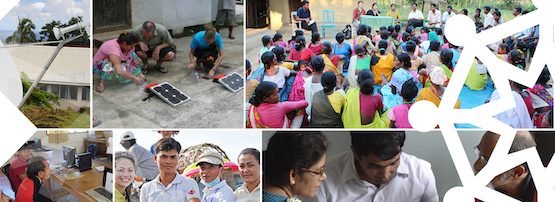
ISIF Asia has awarded USD 120,000 to organizations to support research and development of Internet technologies for the benefit of the region.
Six organizations in the Asia Pacific have been chosen to receive USD 20,000 based on proposals that addressed technical, operational and developmental issues that concern the Asia Pacific Internet community.
This year’s funding marks the 11th anniversary of operation by ISIF Asia in the region.
ISIF Asia received 70 proposals from 17 economies with funding distributed among organizations representing the private sector (1) and academia (5) across five economies: Australia, India, Indonesia, Malaysia and New Zealand.
ISIF Asia is confident the outcomes of the work funded will continue to support an open, stable, and secure Internet that serves the needs of the people in the Asia Pacific region.
Grant winners
Network Operations Research Grants
Modelling and identifying IP address space fragmentation pressure points. Curtin University. Australia. USD 20,000
The project aims to model and identify economies likely to be impacted by pressure points created by partitioning IPv4 address blocks into smaller allocations. These pressure points have both operational and security implications, and there is currently no modelling that identifies who will be impacted or for how long the practice can continue. The project will develop a statistical model of the process, allowing economies at greatest risk to develop mitigation strategies as well as giving the Internet community a better understanding of the differences between regions.
Honeynet threat sharing platform. SGU, BSSN (Badan Siber & Sandi Negara) and Indonesia Honeynet Project (IHP). Indonesia. USD 20,000
The goal of the project is to develop and implement a honeynet threat sharing platform that will collect, store and add contextual information of cybersecurity threats. This information would then be shared with relevant organizations. The project will first be implemented in Indonesia, with future enhancements of the platform to expand to other Asia Pacific economies.
Implementation and utilities of RDAP for wider usability among Internet stakeholders. University of Malaya. Malaysia. USD 20,000
The project aims to increase the adoption and usability of the Registration Data Access Protocol (RDAP) in the Asia Pacific. This will be done by implementing RDAP and its query format into a data simulation tool, Matlab. Currently there is no direct support of RDAP in Matlab to retrieve and process data. Having this data in Matlab will help Internet operations researchers, academic scholars and end-users. Additionally, a Google Chrome extension will be developed for easy presentation of RDAP data to users.
Network coding over satellite links: scheduling redundancy for better goodput. The University of Auckland. New Zealand. USD 20,000
This project aims to tackle the issues faced by many Pacific Islands with satellite Internet. There are currently issues with Transmission Control Protocol (TCP) senders receiving Acknowledgement (ACK) packets due to the long latency of satellite links. The project aims to continue this work with coding packets as well as implementing a queuing system to reduce congestion.
I4D Powering Internet Infrastructure Grants
Telemetering the telltale signs of power issues of wireless internet relays. Rural Broadband — AirJaldi. India. USD 20,000
The project will address power supply issues for rural Internet Service Providers (ISPs) by developing an affordable cloud-based power monitoring and alert system. Currently these ISPs rely on power backup through batteries and other means and must ‘guestimate’ usage during down times. This often results in costly miscalculations. The project will cover data collection, analysis and reporting and an app for the operator to access outputs and alerts for accurate planning of power needs.
Network remote powering through quasi-passive optical nodes. Royal Melbourne Institute of Technology (RMIT University). Australia. USD 20,000
The project aims to solve the issue of powering optical network nodes to provide reliable broadband network access to remote areas. This will be delivered through innovative lower power consumption optical network nodes and the remote powering of the network nodes. This will be quasi-passive and will not consume any power under static network connections. When there is changing traffic and network conditions, the power required for the node will be delivered remotely.
The 2019 I4D Award was not granted this year, instead one additional grant under the Network Operations Research was allocated.
The APNIC Foundation and ISIF Asia thanks all the applicants for sharing their ideas with the Selection Committee members, and thanks APNIC for its generous funding contributions for 2019.
The views expressed by the authors of this blog are their own and do not necessarily reflect the views of APNIC. Please note a Code of Conduct applies to this blog.
